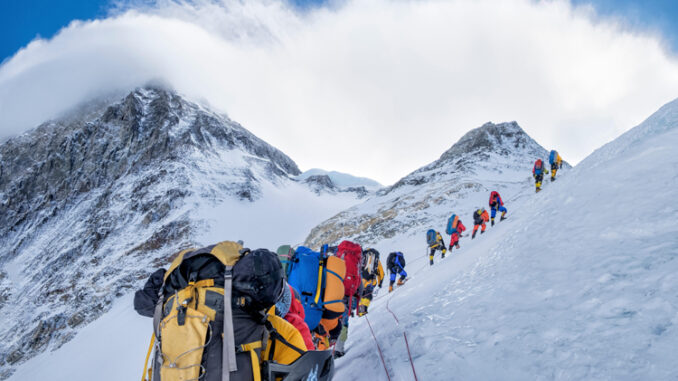
At 8,850 meters (29,035 feet) above sea level, Mount Everest is the highest point on Earth. Hundreds of brave climbers attempt to reach its majestic peak each year, but there many dangers associated with the climb. The terrain is difficult, avalanches are common, and the weather conditions can be unpredictable. But the greatest danger is the altitude.
Altitude is height above sea level. As altitude increases, air pressure decreases. Air pressure is the force caused by the weight of the air above. The change in air pressure is a result of gravity [the force that pulls objects together due to their mass]. Gravity pulls air particles close to Earth’s surface, leaving few particles at high altitudes. As a result, high altitude air is less dense, or “thinner.” Because there are fewer air particles, there is less oxygen.
The lack of oxygen at high altitudes affects human health. People often experience shortness of breath because their body struggles to get the oxygen it needs. When people do not have time to adjust to high altitudes, they can experience altitude sickness–a serious condition that can result in headaches, dizziness, and damage to the brain and lungs.
To prevent altitude sickness, climbers must acclimate. They do this by slowly increasing their altitude, so their body has time to adjust to the decreased oxygen levels.
But above 8,000 meters (26,000 feet), humans cannot survive for long. This is known as the death zone. Most climbers attempting to reach Everest’s peak bring oxygen with them so they can survive in the death zone. Even with oxygen, some climbers have to turn back. Not everyone makes it to the top of the world!
What Do You Think? Is it worth the risks to climb Mount Everest? Why or why not?
Photo Credit: Alun Richardson/Westend61 GmbH/Alamy Stock Photo



